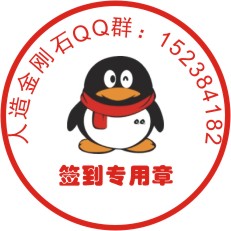博文
[转载]目前关于钻石改色的热门话题(中英文版)
||
英文版内容如下,网页翻译的中文版在后面,需要的朋友请往下翻:
标题:
Why a Few Lab-Grown Diamonds Temporarily Change Color
December 13, 2019

Laura Sipe couldn’t believe her eyes. In February, the owner of J.C. Sipe Jewelers in Indianapolis was readying an I-color lab-grown diamond for a customer. She had always heard that lab-growns fluoresce differently under ultraviolet light, so she decided to take out her UV lamp and check for herself.
When she removed the stone, it was no longer an I. It was gray. And she “freaked out.”
She called up her vendor, who was just as surprised. “One person in the office said she had heard of something like this. She said the diamond turned purple and then it reverted back.”
Sipe’s diamond indeed returned to its original color the next day. She still told the vendor to take it back.
If a customer saw that, “that would freak everyone out,” she says. “Including us.” She hasn’t had that happen to any stone since.
What brings this up is this week’s announcement that Gemological Science International saw something similar at its lab this summer.
A 2 ct. diamond grown with the chemical vapor deposition (CVD) method transformed from near-colorless to slightly blue (pictured) after a few minutes’ exposure to short-wave UV radiation in a DiamondView machine.
“It was a dramatic change,” says chief information officer Nicholas DelRe. “I thought I was seeing things.”
The diamond retained the blue tinge when it was tucked into parcel papers and only returned to its original hue after two and a half hours in the sun. (Typically, the color reverts after about a half hour of exposure to sunlight.)
While GSI’s announcement caused a bit of a stir, it’s long been known that some CVD diamonds will temporarily change color under the “right” conditions. A 2010 Gems & Gemology article reported that the “color of as-grown [non-treated] CVD synthetic diamond gemstones may not be stable,” and that, if subject to ultraviolet radiation or high temperatures, “as-grown CVDs can show large, reversible changes in color.” It notes that these changes don’t cause any structural damage, and adds that, with exposure to sunlight, the stone will return to its original look.
According to Gemological Institute of America distinguished research fellow Dr. James Shigley, some CVD diamonds “display a slight brownish appearance, which can take on a bluish or grayish coloration after they are exposed to UV radiation. This color change can be reversed to the brownish appearance if the diamond is exposed to light.”
He believes that the GSI diamond turning blue was likely sparked by “an optical defect involving silicon, a common impurity in CVD diamonds.”
This kind of color change may be disconcerting, but it is not common, says GIA vice president of research and development Wuyi Wang.
“The unstable color is related to concentrations of some specific unstable optical centers in as-grown CVD diamonds,” he says. “Usually, the concentration is low, so the effect on color is not obvious.”
In addition, many CVD diamonds are treated with high-pressure high-temperature (HPHT), which eliminates the defects and stabilizes the color, he says.
DelRe feels that, at the root, the issue is a difference in how mined and certain lab-created diamonds form.
“Natural diamonds grow in an almost perfect environment, deep inside the Earth,” he says. “We are trying to mimic that. CVD is usually low-pressure high-temperature. There is enough pressure that it crystallizes the diamond, but it is not exactly the same.”
He agrees that it’s rare that the color change is noticeable.
“From what we have seen, this [diamond] was an extreme case,” he says.
Still, DelRe feels it’s important that CVDs be graded in a consistent atmosphere. GSI places them in a full-spectrum light box for 30 minutes before grading.
He thinks that it’s possible that a small number of CVDs might change color when worn at a sunny beach or exposed to a black light at a nightclub, though he’s never heard of it happening. “At this point, this is more of an assumption,” he says. “However, there are unknowns, so why take the chance?”
DelRe recommends that jewelers become “educated as to what may or may not happen. They should make sure they do not have their lab-grown stones and jewelry next to a UV light source. Also, it would be a good idea for jewelers to their have lab-grown jewelry exposed to direct daylight lighting in a light box at least once before putting it out on display, just to be on the safe side.”
John Chapman, founder of Australian lab Gemetrix, believes that while these episodes provide a “fascinating topic for research,” consumers and traders shouldn’t worry too much about them, given that they are reversible and require very specific circumstances to occur.
“A light source such as the sun, even though emitting UV, also emits the visible wavelengths that compete with the UV to restore the color to its ‘ambient’ state,” he says. “The color changes that are observed in a lab where only UV [is present] will be quite different to real world lighting where white light is present simultaneously with any UV…. [T]he changes arising from UV [exposure] should be minimal under any conventional illumination that includes a large component of white light.”
Photochromism, as it’s called, isn’t limited to lab-growns. Certain ultrarare natural diamonds, dubbed “chameleons,” also change color. These fancy colored gems typically morph from green or yellow to orange or brown and back again.
One big difference: Chameleons switch their look when kept in the dark. CVDs do not.
Top: The diamond’s bluish tinge after it was placed in the DiamondView (image courtesy of Gemological Science International)
***************************************
网页翻译版(不太精准,请多包涵)
为什么很少有实验室种植的钻石会临时改变颜色
劳拉·斯佩(Laura Sipe)无法相信她的眼睛。2月,印第安纳波利斯JC Sipe珠宝商的所有者正在为客户准备I色实验室种植的钻石。她一直听说实验室生长的植物在紫外线下发出不同的荧光,因此她决定取出紫外线灯检查自己。
当她移走石头时,它不再是I。它是灰色的。她“吓坏了”。
她打电话给她的小贩,她也很惊讶。“办公室里的一个人说她听说过这样的事情。她说钻石变成紫色,然后又变回来了。”
Sipe的钻石确实在第二天恢复了原始颜色。她仍然告诉供应商取回它。
她说,如果客户看到了这一点,“那会让每个人都惊慌失措”。“包括我们。”自那以后,她再也没有发生过这种事情。
引起这种情况的是本周 宣布 ,国际宝石科学协会今年夏天在实验室看到了类似的东西。
2克拉 经过化学气相沉积(CVD)方法生长的钻石,在DiamondView机器中暴露于短波紫外线辐射中几分钟后,由近无色变为浅蓝色(如图)。
“这是一个巨大的变化,”首席信息官尼古拉斯·德尔瑞(Nicholas DelRe)说。“我以为我在看东西。”
钻石被包裹在包裹纸中时保留了蓝色,直到在阳光下晒了两个半小时才恢复到原来的色调。(通常,在暴露于阳光下约半小时后颜色会恢复。)
尽管GSI的声明引起了一些轰动,但众所周知,一些CVD钻石会在“合适”的条件下暂时改变颜色。2010年《宝石与宝石学》(Gems&Gemology)的一篇文章报道说,“成年的[未处理] CVD合成钻石宝石的颜色可能不稳定,并且,如果受到紫外线辐射或高温的影响,“成年的CVD可能会显示出较大的颜色。它指出这些变化不会造成任何结构性损坏,并补充说,在阳光照射下,石材将恢复其原始外观。
根据美国宝石学院杰出研究员James Shigley博士的说法,某些CVD钻石“显示出略带褐色的外观,在暴露于UV辐射后可能呈现带蓝色或灰色的颜色。如果钻石暴露在光线下,这种颜色变化可以逆转为褐色。”
他认为,GSI钻石变蓝可能是由“涉及硅的光学缺陷引发的,硅是CVD钻石中的常见杂质。”
GIA研究与开发副总裁Wuyi Wang说,这种颜色变化可能令人不安,但并不常见。
他说:“不稳定的颜色与成年的CVD钻石中某些特定的不稳定光学中心的浓度有关。” “通常浓度较低,因此对颜色的影响不明显。”
他说,此外,许多CVD金刚石都经过高压高温(HPHT)处理,从而消除了缺陷并稳定了颜色。
DelRe认为,从根本上讲,问题在于开采方式和某些实验室创造的钻石的形成方式有所不同。
他说:“天然钻石生长在地球内部几乎完美的环境中。” “我们正在试图模仿。CVD通常是低压高温。压力足以使钻石结晶,但并不完全相同。”
他同意,颜色变化很少见。
他说:“从我们所看到的情况来看,(钻石)是一个极端的情况。”
尽管如此,DelRe仍认为在恒定的气氛中对CVD进行分级非常重要。GSI将它们放在全光谱灯箱中放置30分钟,然后再进行评分。
他认为,少量的CVD在阳光明媚的海滩上穿着或在夜总会暴露在黑光下时可能会改变颜色,尽管他从未听说过这种情况。他说:“在这一点上,这更多是一种假设。” “但是,有未知数,那么为什么要抓住机会?”
DelRe建议珠宝商“对可能发生或可能发生的事情进行教育”。他们应确保自己的实验室种植的石头和珠宝旁边没有紫外线光源。同样,对于珠宝商来说,将实验室种植的珠宝放在灯箱中暴露于直接日光下至少一次,以确保安全,这也是一个好主意。
澳大利亚实验室Gemetrix的创始人约翰·查普曼(John Chapman)认为,尽管这些事件提供了“令人着迷的研究主题”,但由于它们是可逆的并且需要非常特殊的情况,因此消费者和交易者不必为它们担心太多。
他说:“像太阳这样的光源,即使发出紫外线,也会发出与紫外线竞争的可见波长,以将颜色恢复到'环境'状态。” “在仅存在紫外线的实验室中观察到的颜色变化将与真实世界的照明完全不同,在现实世界中,白色光与任何紫外线同时存在……”。在任何包含大量白光的常规照明下,紫外线[暴露]引起的变化应最小。”
所谓的光致变色不仅限于实验室培养的。某些被称为“变色龙”的超稀有天然钻石 也会改变颜色。这些彩色彩色宝石通常从绿色或黄色变为橙色或棕色,然后再变回。
一个很大的不同:变色龙在黑暗中时会改变外观。CVD没有。
上图:将钻石置于DiamondView中后的淡蓝色调(图片由国际宝石科学学院提供)

https://blog.sciencenet.cn/blog-257140-1210488.html
上一篇:[转载]现在培育钻石与天然钻石的广告用语之争
下一篇:[转载]GSI对CVD钻石颜色不稳定性的警告(中英文版本)